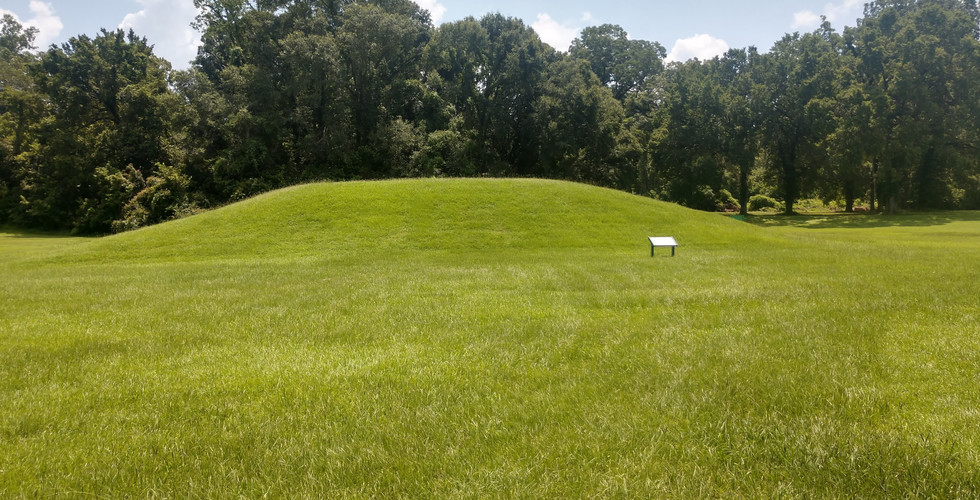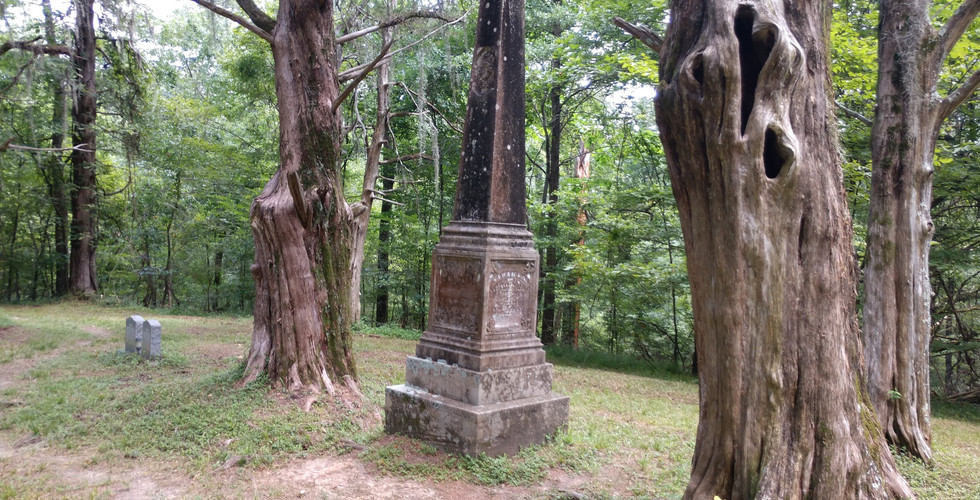
Man, it's good to be back on the road! And I've finally made it to the Natchez Trace.
When I stop and think, this is probably the trip that I started this whole full-time travel life for, or at least was a big factor. Yes, I still plan to eventually volunteer at state and national parks, but the Natchez Trace and the lower Mississippi area figure prominently.
It all goes back to Kathy and I and our annual Christmas trips to Dallas. Every time we took the lower route (I85 to I20), Jackson, Mississippi was our overnight stop. And of course you can't miss the signs for the Natchez Trace Parkway on the highway. Plus she and I both wanted to go to Vicksburg.
It was always the same. "Not this time. We need to get going. We'll make extra time next go around." Next time never came.
So when I was planning my winter trip, "The Trace" and Vicksburg figured prominently. And when everything went to pot, Mississippi was the only place I couldn't get refunds on my camping fees. They did, however offer vouchers, so I guess Karma had stepped in to say "You ain't missin' out on this one."
And here I am. With a couple of weeks in Natchez, and still more coming up in the northern part of the state, I'm going to immerse myself in all the history here.
So where to start? Well, two things just happen to come together at my current front door. Of course Natchez is the southernmost terminus of the Trace, and it's also the site of a huge Natchez Indian village. And there are several Mississippi Mound sites in the area, but more on those in a bit.

First, a little history on the Natchez Trace itself. For hundreds of years, the Natchez, Choctaw and Chickasaw Indians traveled the route that cut through their territories. And as our young country expanded travelers, explorers and settlers followed the same route, even to the point of "sinking" spots where the land was soft.
My favorite tales are of the "Kaintucks" who floated barges down the Mississippi loaded with crops, livestock and other goods for sale in New Orleans. Since it would be to difficult to sail back up the river, they dismantled their boats , sold the lumber (talk about recycling!) and then either walked or rode horseback home along the Trace.
But there's more to the Indian history here than the Trace. The Natchez were "mound" Indians, meaning that they constructed earthen mounds to place their more sacred structures. Temples, and the homes of their highest leaders, whom the Natchez called "Suns", were constructed on these man made hills. Over many centuries, the mounds grew as the original structures were buried and more earth was laid upon them and new buildings rose.
One of the largest of the mounds in the US, called the Emerald Mound, is just a few miles north of Natchez, and the Grand Village of the Natchez Indians is in town. Both are historical landmarks and the 8 acre Emerald Mound has a path leading to the top where visitors can envision what life was like for the Natchez. The Grand Village has a wonderful visitor center with artifacts and an instructive video, with many facts taken from early European explorers who met the Natchez and witnessed village life.
This week's side note (just one this time. I'm trying to cut back.) The Natchez had something in common with ancient Egyptians. It's called "Retainer Sacrifice." When a noble died, servants were ceremoniously killed. The idea was that they would continue to serve them in the afterlife.
There is a whole lot more to see and do in this part of the country. From "Stands," or hotels for travelers along the Trace, to the sunken trace, free campgrounds, plantations, graveyards and of course the Vicksburg battlefield. And don't forget the Mighty Miss! So much so that recording them will take multiple missives. Heck, I probably won't even get to it all. Ah, well. A reason to come back.
Next week, Vicksburg and that oh so famous battle. I can't wait! But you'll have to.
Until then,
Later, folks.

































The columns are the remains of Windsor, a mansion built in 1861. Kinda a sad story, the owner didn't live to see it finished, and although his family lived there until the Civil War, and the house survived that, it was burned to the ground by an accidental fire in 1890.
Here's a shot of the info plaque at the site. It's just off the Trace about an hour north of Natchez.
I'm curious about the Corinthian-looking columns.